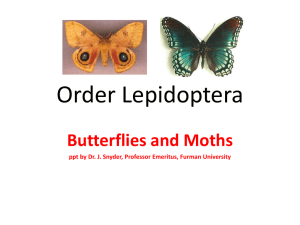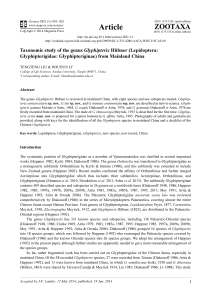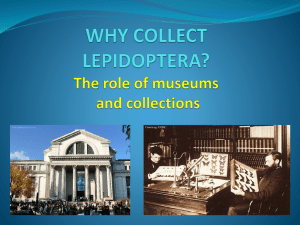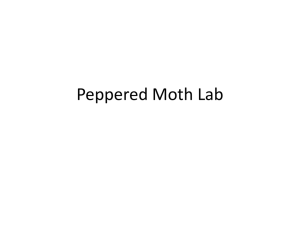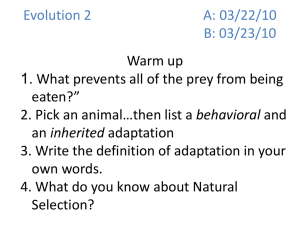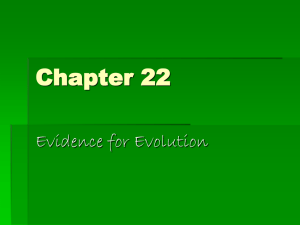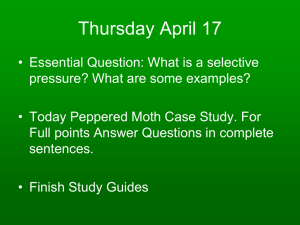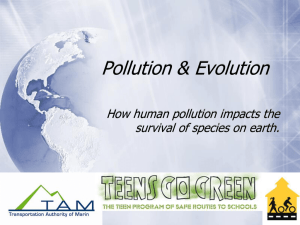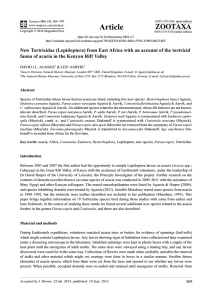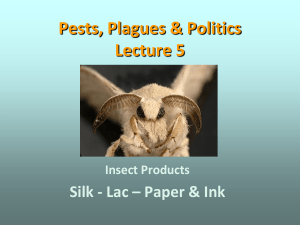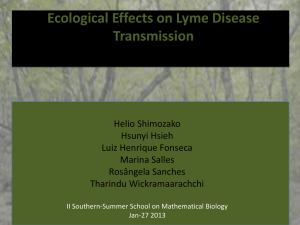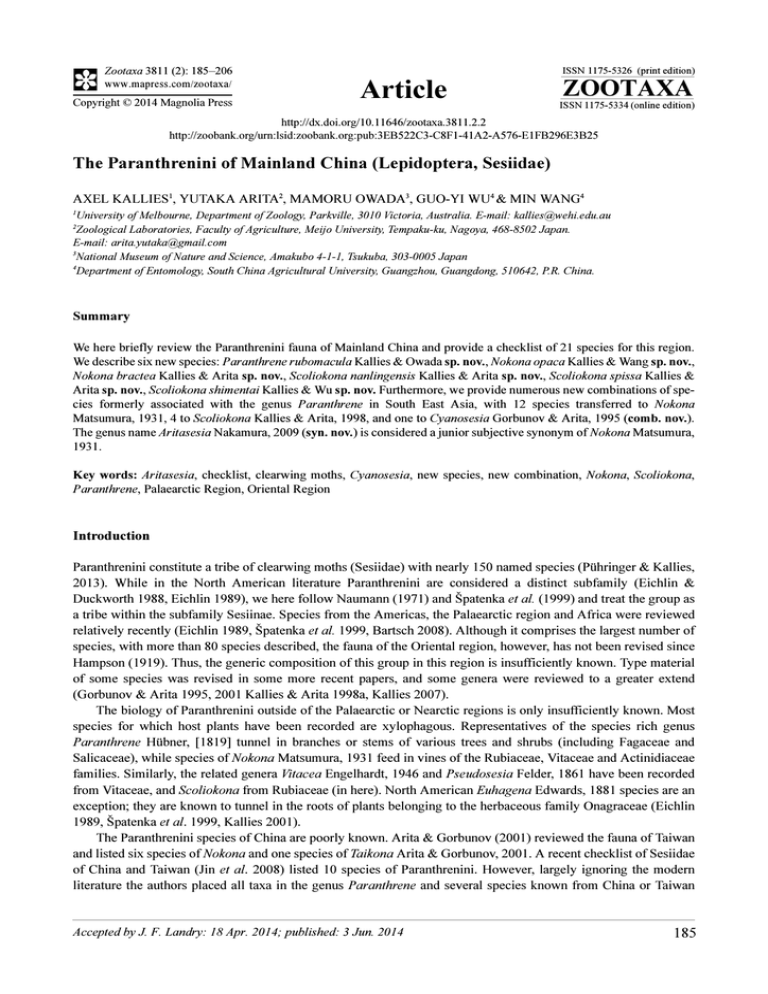
Zootaxa 3811 (2): 185–206
www.mapress.com /zootaxa /
Copyright © 2014 Magnolia Press
Article
ISSN 1175-5326 (print edition)
ZOOTAXA
ISSN 1175-5334 (online edition)
http://dx.doi.org/10.11646/zootaxa.3811.2.2
http://zoobank.org/urn:lsid:zoobank.org:pub:3EB522C3-C8F1-41A2-A576-E1FB296E3B25
The Paranthrenini of Mainland China (Lepidoptera, Sesiidae)
AXEL KALLIES1, YUTAKA ARITA2, MAMORU OWADA3, GUO-YI WU4 & MIN WANG4
1
University of Melbourne, Department of Zoology, Parkville, 3010 Victoria, Australia. E-mail: kallies@wehi.edu.au
Zoological Laboratories, Faculty of Agriculture, Meijo University, Tempaku-ku, Nagoya, 468-8502 Japan.
E-mail: arita.yutaka@gmail.com
3
National Museum of Nature and Science, Amakubo 4-1-1, Tsukuba, 303-0005 Japan
4
Department of Entomology, South China Agricultural University, Guangzhou, Guangdong, 510642, P.R. China.
2
Summary
We here briefly review the Paranthrenini fauna of Mainland China and provide a checklist of 21 species for this region.
We describe six new species: Paranthrene rubomacula Kallies & Owada sp. nov., Nokona opaca Kallies & Wang sp. nov.,
Nokona bractea Kallies & Arita sp. nov., Scoliokona nanlingensis Kallies & Arita sp. nov., Scoliokona spissa Kallies &
Arita sp. nov., Scoliokona shimentai Kallies & Wu sp. nov. Furthermore, we provide numerous new combinations of species formerly associated with the genus Paranthrene in South East Asia, with 12 species transferred to Nokona
Matsumura, 1931, 4 to Scoliokona Kallies & Arita, 1998, and one to Cyanosesia Gorbunov & Arita, 1995 (comb. nov.).
The genus name Aritasesia Nakamura, 2009 (syn. nov.) is considered a junior subjective synonym of Nokona Matsumura,
1931.
Key words: Aritasesia, checklist, clearwing moths, Cyanosesia, new species, new combination, Nokona, Scoliokona,
Paranthrene, Palaearctic Region, Oriental Region
Introduction
Paranthrenini constitute a tribe of clearwing moths (Sesiidae) with nearly 150 named species (Pühringer & Kallies,
2013). While in the North American literature Paranthrenini are considered a distinct subfamily (Eichlin &
Duckworth 1988, Eichlin 1989), we here follow Naumann (1971) and Špatenka et al. (1999) and treat the group as
a tribe within the subfamily Sesiinae. Species from the Americas, the Palaearctic region and Africa were reviewed
relatively recently (Eichlin 1989, Špatenka et al. 1999, Bartsch 2008). Although it comprises the largest number of
species, with more than 80 species described, the fauna of the Oriental region, however, has not been revised since
Hampson (1919). Thus, the generic composition of this group in this region is insufficiently known. Type material
of some species was revised in some more recent papers, and some genera were reviewed to a greater extend
(Gorbunov & Arita 1995, 2001 Kallies & Arita 1998a, Kallies 2007).
The biology of Paranthrenini outside of the Palaearctic or Nearctic regions is only insufficiently known. Most
species for which host plants have been recorded are xylophagous. Representatives of the species rich genus
Paranthrene Hübner, [1819] tunnel in branches or stems of various trees and shrubs (including Fagaceae and
Salicaceae), while species of Nokona Matsumura, 1931 feed in vines of the Rubiaceae, Vitaceae and Actinidiaceae
families. Similarly, the related genera Vitacea Engelhardt, 1946 and Pseudosesia Felder, 1861 have been recorded
from Vitaceae, and Scoliokona from Rubiaceae (in here). North American Euhagena Edwards, 1881 species are an
exception; they are known to tunnel in the roots of plants belonging to the herbaceous family Onagraceae (Eichlin
1989, Špatenka et al. 1999, Kallies 2001).
The Paranthrenini species of China are poorly known. Arita & Gorbunov (2001) reviewed the fauna of Taiwan
and listed six species of Nokona and one species of Taikona Arita & Gorbunov, 2001. A recent checklist of Sesiidae
of China and Taiwan (Jin et al. 2008) listed 10 species of Paranthrenini. However, largely ignoring the modern
literature the authors placed all taxa in the genus Paranthrene and several species known from China or Taiwan
Accepted by J. F. Landry: 18 Apr. 2014; published: 3 Jun. 2014
185
Variability. The specimens from Prov. Shaanxi have a somewhat narrower forewing discal spot and distal
area, resulting in a slightly larger ETA. However, there were no detectable differences in the morphology of the
male genitalia.
Acknowledgements
We express our gratitude to various collectors and to Udo Koschwitz (Germany) for critical reference specimens
and to Marianne Horak (Australian National Insect Collection) for information regarding the type specimen of S.
uncariae. Furthermore, we thank Karel Spatenka (Czech Republic), Daniel Bartsch (Germany) and Franz
Pühringer (Austria) for images of historical type specimens, and Theo and Walter Garrevoet (Belgium) for some of
the images of recent material reproduced here.
References
Arita, Y. (2011) Sesiidae. In: Wang, M. & Kishida, Y. (Eds.), Moths of Guangdong Nanling National Nature Reserve. Goecke
& Evers, Keltern, pp 37–38.
Arita, Y. & Gorbunov, O. (2001) Sesiidae of Taiwan. I. The Tribes Tinthiini, Similipepsini, Paraglosseciini, Pennisetiini,
Paranthrenini and Cissuvorini. Japanese Journal of Systematic Entomology, 7 (2), 131–188.
Bartsch, D. (2008) A review of the Paranthrenini of the Afrotropical region (Lepidoptera: Sesiidae). Entomologische
Zeitschrift, 118 (6), 265–280.
Common, I.F.B. (1990) Moths of Australia. Melbourne University Press, Carlton, Victoria, 32 plates, 535 pp.
Du, J.W., Xu, S.F., Dai, X.J. & Zhang, X. (1985) Strategies for control of poplar clearwing moth Paranthrene tabaniformis
Root by mass trapping. Contributions from Shanghai Institute of Entomology, 5, 19–24.
Eichlin, T.D. (1989) Western Hemisphere clearwing moths of the subfamily Paranthreninae (Lepidoptera: Sesiidae).
Entomography, 6, 159–212.
Eichlin, T.D. & Duckworth, W.D. (1988) The Moths of America North of Mexico. Fascicle 5.1. Sesioidea, Sesiidae, TD
Eichhlin and WD Duckworth, Washington, 176 pp.
Gorbunov, O. & Arita, Y. (1995) A revision of Frederic Moore’s clearwing moth types (Lepidoptera, Sesiidae) at Humboldt
University, Berlin. Tinea, 14 (3), 204–224.
Gorbunov, O. & Arita, Y. (2001) A revision of Felix Bryk’s clearwing moth types (Lepidoptera, Sesiidae) at the Naturhistoriska
Riksmuseet in Stockholm, Sweden. Melittia, 1, 9–51.
Hampson, G.F. (1919) A classification of the Aegeriadae of the Oriental and Ethiopian Regions. Novitates Zoologicae, 26 (1),
46–119.
Hu, S.H. (1986) A preliminary study on Paranthrene regalis Butler. Natural Sciences Journal of Hunan Normal University, 9
(4), 62–67
Jian, F.M. (1982) A preliminary report on Parathrene [sic] regalis Butler. Insect Knowledge (Kunchong Zhishi), 19 (5), 37–38.
Jin, Q., Wang, S.X. & Li, H.H. (2008) Catalogue of the family Sesiidae in China (Lepidoptera: Sesiidae). SHILAP Revta. lepid.,
36 (144), 507–526
Kallies, A. (2001) New records and a revised checklist of the Australian clearwing moths (Lepidoptera: Sesiidae). Australian
Journal of Entomology, 40, 342–348.
http://dx.doi.org/10.1046/j.1440-6055.2001.00251.x
Kallies, A. (2007) A revision of the clearwing moth species described by Zukowsky from China with additional notes on
Sesiidae species from the Mell collection (Sesiidae). Nota lepidopterologica, 30 (2), 387–396.
Kallies, A. & Arita, Y. (1998a) Revision of Paranthrene chrysoidea Zukowsky, 1932 (Lepidoptera, Sesiidae) from Taiwan.
Species Diversity, 3 (2), 211–217.
Kallies, A. & Arita, Y. (1998b) New and little known clearwing moths (Lepidoptera, Sesiidae) from the Philippine Islands.
Transactions of the Lepidopterological Society of Japan, 49 (4), 245–270.
Liu, Y.Q., Xu, Z.G. & Li, B.J. (1992) Sesiidae. In: Peng, J.W. & Liu, Y.Q. (Eds.), Iconography of Forest Insects in Hunan
China, Hunan Science & Technology Publishing House, Hunan, pp 728–731.
Meyrick, E. (1930) Aegeriadae. Exotic Microlepidoptera, 3, 584–585.
Miao, J.C., Liu, X.L., Xu, B.R., Can, W.C. & Li, W.M. (1987) Study on the attraction effect and technical application of sex
pheromone of poplar clearwing moth Paranthrene tabaniformis. Journal of North-East Forestry University, China, 15 (1),
30–39.
Miao, J.C., Li, G.Y., Xia, W.F. & Li, X.L. (1989) A study on the control of Paranthrene tabaniformis by stem smearing with
sticky pheromone paste. Forest Science and Technology, 8, 28–30.
Naumann, C.M. (1971) Untersuchungen zur Systematik und Phylogenese der holarktischen Sesiiden (Insecta, Lepidoptera).
Bonner Zoologische Monographien 1. Zoologisches Forschungsinstitut und Museum Alexander Koenig, Bonn, 190 pp.
PARENTHRETINI OF CHINA (SESIIDAE)
Zootaxa 3811 (2) © 2014 Magnolia Press ·
205
Pühringer, F. & Kallies, A. (2013) Checklist of the Sesiidae of the world. http://www.sesiidae.net/Checklst.htm. (accessed 26
Nov 2013)
Schneider, F. (1940) Schadinsekten und ihre Bekämpfung in ostindischen Gambirkulturen. Mitteilungen der Schweizerischen
Entomologischen Gesellschaft (Bulletin de la Société Entomologique Suisse), 18 (3), 116–117.
Špatenka, K., Gorbunov, O., Laštůvka, Z., Toševski, I. & Arita, Y. (1999) Sesiidae, Clearwing Moths. In: Naumann, C.M.
(Ed.), Handbook of Palaearctic Macrolepidoptera, 1. Gem Publishing Company, Wallingford, England, 569 pp.
Wang, Y. & Yang, J. (2002) Sesiidae. Fauna of Insects in Fujian Province of China, 5, 14–27.
Xu, Z.G., Jin, T. & Liu, X.L. (1995) Introduction of new species and new recorded clearwing moths from China. Insect
Knowledge (Kunchong Znishi), 32 (3), 300–304.
Xu, Z.G., Jin, T. & Liu, X.L. (1999) A new and six new recorded clearwing moths from Ningxia (Lepidoptera: Sesiidae). Acta
Agric. Boreali Sin., 8 (1), 7–10.
Yang, J.K. & Wang, Y. (1989) A new genus and six species of clearwings damaging forest and fruit trees. Forest. Res., 2 (3),
229–238.
Zhang, L.H. (1991) Studies on Paranthrene actinidiae Yang et Wang in Actinidia trees. Acta Agriculturae Universitatis
Jiangxiensis, 13 (3), 268–274.
Zhou, Z.L. (1995) Preliminary study on the mass sex pheromone trapping against the grape clearwing moth. Acta
Phytophylacica Sinica, 22 (1), 17–21.
Zukowsky, B. (1929) Beiträge zur Fauna sinica (VIII). Die südchinesischen Aegeriiden der Sammlung Mell. Internationale
Entomologische Zeitschrift, 23 (3), 33–37.
206 · Zootaxa 3811 (2) © 2014 Magnolia Press
KALLIES ET AL.

